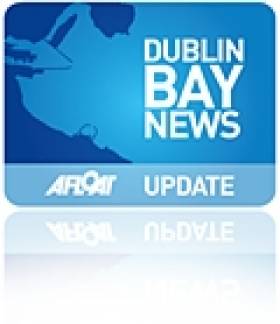Displaying items by tag: boat storage
Dun Laoghaire Sailors Seek Winter Boat Storage Options
#boatstorage – Winter storage for boats is at a premium in Dun Laoghaire this winter with yacht club platforms packed and no boat storage on the Carlisle Pier available leaving boat owners looking around for secure locations in Dublin this winter. Thankfully there are some local options available.
A decision by Dun Laoghaire Harbour Company not to store boats on the Carlisle pier this Winter has forced waterfront yacht clubs to look elsewhere for winter boat storage after the annual lift out was successfully completed last Saturday.
Traditionally each club DMYC, RIYC, RStGYC and NYC offers its members storage on its own hard standing but space is limited and the Carlisle pier served as a convenient overflow for yachts and boats of all different sizes in recent years.
Dun Laoghaire has the biggest boating stock in the country, with over 2,500 boats stored ashore and afloat so boat storage in a city is always an issue but a number of good alternative storage options have surfaced however. (Please also see comments below – Ed).
Boats on moorings in the harbour are lifted out each October with the onset of winter for maintenance and insurance purposes.
One option is to use the town's 800-berth marina that offers berthing all year round for those wanting to keep their boat in the water but others will want to haul out in order to carry out essential hull maintenance work.
Other storage options are also available and these include leading Irish marine firm MGM Boats who are offering hard standing storage at their Boat yard near the Coal Harbour in Dun Laoghaire.
MGM have limited storage for boats of all sizes on cradles and trailers. MGM can also supply cradles. The yard offers secure storage, close proximity to Dun Laoghaire, power and water is available and access to work on boats as required. Costs are €20 p/metre for a typical Ruffian keelboat that works out as (€840) and a Shipman 28 (€1023).
MGM will also provide complete service of lift out, power-wash and storage Example of cost €30 p/meter Ruffian (€1260)Shipman 28 (€1530)
Dalkey firm Western Marine is also offering both uutdoor and indoor storage for sail boats on trailers up to 30ft and powerboat/ ribs up to 40ft.
Western marine say they offer Secure storage, Close proximity to Dun Laoghaire and power and water is available on site.
Access to work on boats as required, crane on site. An example of costs are as follows: SB20 €395 Ruffian (€495) Shipman €595
The company says it will have a full range of services on site, including full chandlery, boat valeting, antifouling service, rigging service etc.
Western marine have also launched a trailer a tow bar service, specialising in the servicing and repair of all trailers, including bearings and brakes, as well as fitting tow bars to all makes of cars.
If you know of any other boat storage options for readers please leave details in the comment box below
Where to Store it
In Dun Laoghaire marina, the country’s largest with 800 berths is advertising attractive deals for stand alone berths this winter and being in the water also means there’s the chance of using the boat in Dublin Bay Sailing Club’s winter series.
Across the country, at Kilrush marina on the Shannon Estuary there are special winter berth rates from October to the end of March.
On inland waters, it is ‘out with the old and in with the new move’ at Athlone Lakeside marina. A considerable investment in new berths is being made for next season. Old wooden jetties are being replaced.
The boating centre with club house, run by Michael Barrett, will by next May have facilities for 150 boats. It has indoor winter storage for 50 boats and a lift out facility for up to 50 ton vessels. There is a club house and full mechanical and technical back up.
Regardless of location, however, all moorings are susceptible to a change in wind direction. If you’re leaving the boat in the water, it’s astonishing how much wear there can be over a winter period. A boat might look snug on a marina in a south-westerly but prolonged north-easterlies will push the boat in a totally different location, hard to remove fender marks being one likely result. Don’t just say good-bye boat see you in the summer, do check lines and fenders regularly.





























































